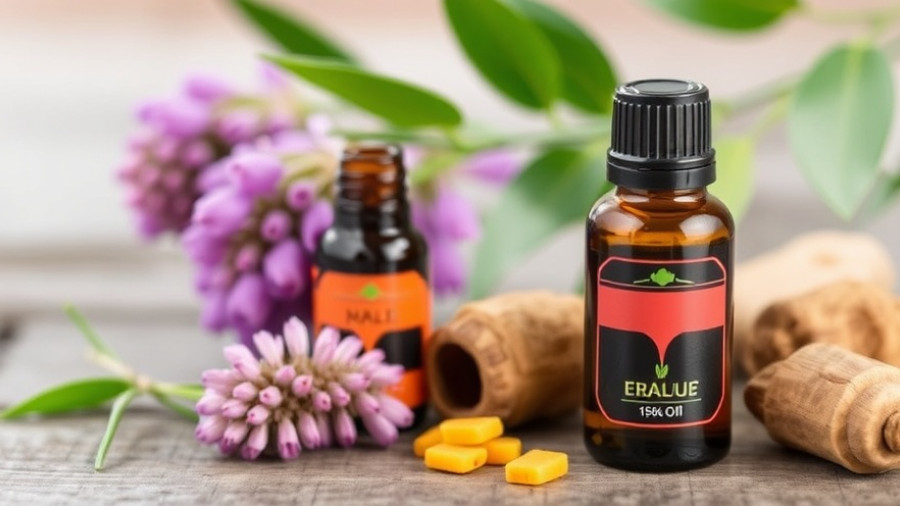
Understanding Essential Oil Safety: A Comprehensive Guide
With the recent resurgence of interest in natural remedies, essential oils have gained a prominent place in wellness routines. While these potent plant extracts can offer comforting benefits—from stress relief to enhancing sleep—misuse and misunderstanding pose significant risks. As health-conscious adults aged 25-45 increasingly seek holistic wellness tips, it's crucial to navigate the realm of essential oils with informed caution.
The Potency of Essential Oils: Why Safety is Paramount
Essential oils, renowned for their concentrated nature, can take hundreds of pounds of plant material to yield a single bottle. This intensity means that while a drop may seem innocuous, it can be equivalent to vast quantities of the herb itself. For instance, one drop of peppermint oil is said to equal the essence of 26 cups of mint tea. Such concentration can yield impressive benefits but also amplifies the risk of adverse reactions if not used properly.
Prioritizing education on essential oil safety can save users from unwanted side effects. For example, certain oils, such as cinnamon and clove, are known for their potential to irritate the skin and mucous membranes if applied undiluted. Understanding the critical distinction between oils that require dilution and those that can be used directly is the first step in safely incorporating essential oils into your personal care routines.
Photosensitivity: A Hidden Risk With Citrus Oils
Particularly concerning are the phototoxic properties inherent in some essential oils, especially those derived from citrus fruits. Oils like bergamot, lime, and lemon can increase the skin's sensitivity to sunlight, causing burns when applied before sun exposure. This hazard underlines the importance of knowing which oils are safe for topical application at various times, especially in outdoor settings. Always check whether your citrus oil is cold-pressed—these are typically the oils that present a higher risk for photosensitivity.
Inhalation and Oral Use: Striking a Balance
Aromatherapy, or the inhalation of essential oils via diffusers or sprays, is generally considered safe and effective for wellness. However, moderation should be the guiding principle: diffusing oils in a well-ventilated area and taking breaks during usage can prevent overwhelming both users and pets. The recommendation is to diffuse essential oils in 30-minute intervals to allow for adequate air circulation. Additionally, while some proponents endorse the internal use of essential oils, it’s crucial to approach this with caution. Only a select few oils are approved for ingestion, and they should always be consumed in diluted forms and under professional guidance.
Safety for Vulnerable Populations: Caution is Key
Special populations, including children, pregnant women, and those with compromised health, warrant particular caution when using essential oils. The American College of Healthcare Sciences emphasizes avoiding certain oils altogether during pregnancy and nursing, given their capacity to cross the placenta and impact hormone levels. For instance, peppermint oil has been noted to decrease milk production, making it even more essential for nursing mothers to do their research before use.
For children, diffusion offers a safer avenue for benefiting from essential oils, mitigating the risks associated with topical application, especially on sensitive skin. Familiar oils like lavender and chamomile can help promote relaxation but should be carefully monitored to prevent adverse reactions.
Making Informed Decisions: Key Takeaways and Action Steps
Incorporating essential oils into your wellness routines can be immensely rewarding if approached thoughtfully. Start with the following steps to ensure safety:
- Research: Always learn about the specific properties, benefits, and risks associated with each oil. Familiarize yourself with safe dilution practices relevant to your needs.
- Consultation: Consider reaching out to a certified aromatherapist or healthcare professional to discuss your intentions and get personalized recommendations.
- Patch Testing: Before applying oils topically, conduct a skin patch test to check for adverse reactions.
- Storage: Store essential oils in glass bottles to prevent degradation and ensure long-lasting efficacy.
Embrace the journey of wellness with essential oils, but do so with the recognition of their power. Understanding the balance between benefits and risks will allow for a more wholesome and fulfilling essential oil experience.
 Add Row
Add Row  Add
Add 




Write A Comment